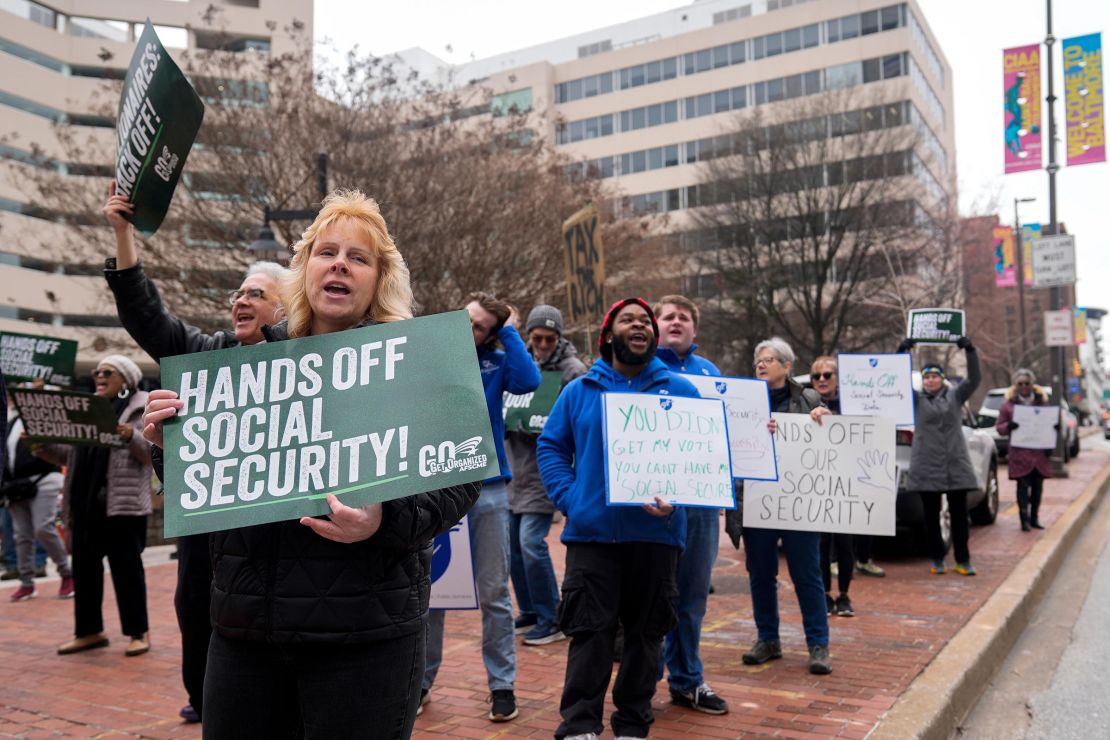CNN
—
The Social Security Administration plans to slash its technology team by nearly one-third at a time when the agency’s complex and fragile computer systems are crashing more often.
Top executives in the agency’s Office of the Chief Information Officer, known as OCIO, have been tasked with cutting 30% of its staff as part of a large-scale reduction-in-force being implemented across the federal government, according to two former employees with direct knowledge of the plan. The office had about 3,200 employees, though it has already lost hundreds of experienced workers due to retirement and separation incentives. (It has also gained some staffers after the agency shuttered other divisions and transferred the functions to OCIO.)
The planned purge comes as the agency’s long-glitchy technology is suffering more outages than usual, multiple current and former employees, as well as advocates, told CNN. Also adding to the stress on the systems is the increased number of concerned Americans accessing the public “my Social Security” website, calling the 800 number and visiting local offices amid the turmoil surrounding the agency’s massive restructuring.
This week alone, the “my Social Security” site was down for several hours, with a message reading “Online Service Not Available.” Then, a tech update involving identity authentication resulted in a longer outage for Supplemental Security Income beneficiaries, blocking them from accessing their online accounts, according to one former employee. Some recipients, who are low-income older Americans and people with disabilities, saw an erroneous message that they are not currently receiving payments, according to an internal memo to employees that was read to CNN.
“Those are the risks,” the former employee told CNN. “You lose staff that have the institutional knowledge, and when something happens, you can’t recover, or it takes you a lot longer to recover. The implication is American people get degraded services on the tech side because people internally are understaffed.”
The agency, which is being run by acting Commissioner Leland Dudek while Trump’s nominee, Frank Bisignano, awaits confirmation, did not return a request seeking comment.
Staffers in field offices are encountering more frequent glitches in recent weeks that are temporarily preventing them from helping customers, two union representatives who work in the local offices told CNN. They said they are seeing more internal notices that problems with one or more malfunctioning software programs are being addressed.
“If the system is down, we can’t look at a record to be able to take a claim or help beneficiaries with an issue that arises after they are getting benefits,” said Angela Digeronimo, executive vice president of the American Federation of Government Employees Council 220, which represents Social Security employees in field offices, telecenters and other units that assist customers. “If the system is down, we don’t have the tools to give the beneficiary the answer that they are looking for.”
The increase in technology problems has prompted some former Social Security executives – notably Martin O’Malley, who served as commissioner in the last year of the Biden administration – to warn that a disruption in payments could occur in coming months. More than 73 million retirees, people with disabilities and others receive Social Security benefits each month.
Amid those warnings, the Trump administration is targeting the agency’s unionized tech workforce. President Donald Trump signed an executive order last week aimed at stripping many federal workers’ collective bargaining rights, which would make it easier to fire them or shift their duties. Trump said the move is intended to bolster national security, but the White House fact sheet also noted that “certain federal unions have declared war on President Trump’s agenda.”
The only union workers who would be affected at Social Security are those in OCIO, who number roughly 1,300 after taking into account those who took various incentives to leave, said Shelley Washington, executive vice president at AFGE Local 1923, which represents the office’s staff. The agency has told AFGE that it is reviewing the executive order.
The administration is also suing multiple AFGE locals in federal court in Texas seeking to release several agencies, including Social Security, from their collective bargaining agreements.

Without a union contract in place, it would be easier for Social Security to replace OCIO’s personnel with staffers who are “more amenable to doing what they want to do,” Washington said, referring to the efforts by Elon Musk’s Department of Government Efficiency to gain access to databases containing hundreds of millions of Americans’ personal information, which has been temporarily halted by a federal judge.
To be sure, Social Security’s antiquated public and internal systems have long experienced outages. At one of the agency’s weekly operational meetings last month, which is posted to the agency’s YouTube site, Dudek asked if he had fired anyone that would impair the operations of my Social Security or the databases. Wayne Lemon, deputy chief information officer for implementation, responded no.
The acting commissioner then asked whether the team had the resources it needs to maintain the systems’ stability, to which Lemon said it has what it needs for now.
“There’s nothing, I’ll call it ‘unusual,’ about these outages, per se,” Lemon said, responding to Dudek’s query on whether these problems have happened in the past.
Dudek acknowledged the concerns that many Americans now have about their personal information and their benefits.
“I think we have a lot of customers that right now, a lot of Americans, that are very uneasy, and they need to understand that we are protecting their data, and that we will always have their data,” he said. “And we can make sure their earnings record reflects the benefits that they will receive, both now and in the future.”
The coming cuts at OCIO are part of the agency’s effort to whittle down its workforce by 7,000 staffers, or 12%. However, the overhaul lacks strategic planning, which has fanned concerns about the remaining employees’ ability to handle tech problems, former officials and advocates said.
Social Security’s core computer systems run on an aging programming language known as COBOL (Common Business Oriented Language). It’s no longer taught, making the old hands at the agency even more essential when it comes to keeping the technology operating and addressing things that go wrong. In addition, there are 3,600 intra-connected applications that keep the agency running.
But Social Security is now losing the staff that can prevent upgrades from becoming outages through testing and understanding the implications of the changes being made, one former official said. Plus, it’s very difficult to reduce the number of employees until the computer systems are simplified.
“You can’t cut out staff until you cut out complexity in your application portfolio,” the former official said. “They’re kind of doing it really backwards on a lot of fronts.”
Wired reported last week that DOGE is planning to rewrite Social Security’s COBOL code in a matter of months, which has alarmed former officials and advocates.
“It’s reckless to do it so quickly,” Kathleen Romig, director of Social Security and disability policy at the left-leaning Center on Budget and Policy Priorities, told CNN. “It’s setting yourself up for possible catastrophe.”

